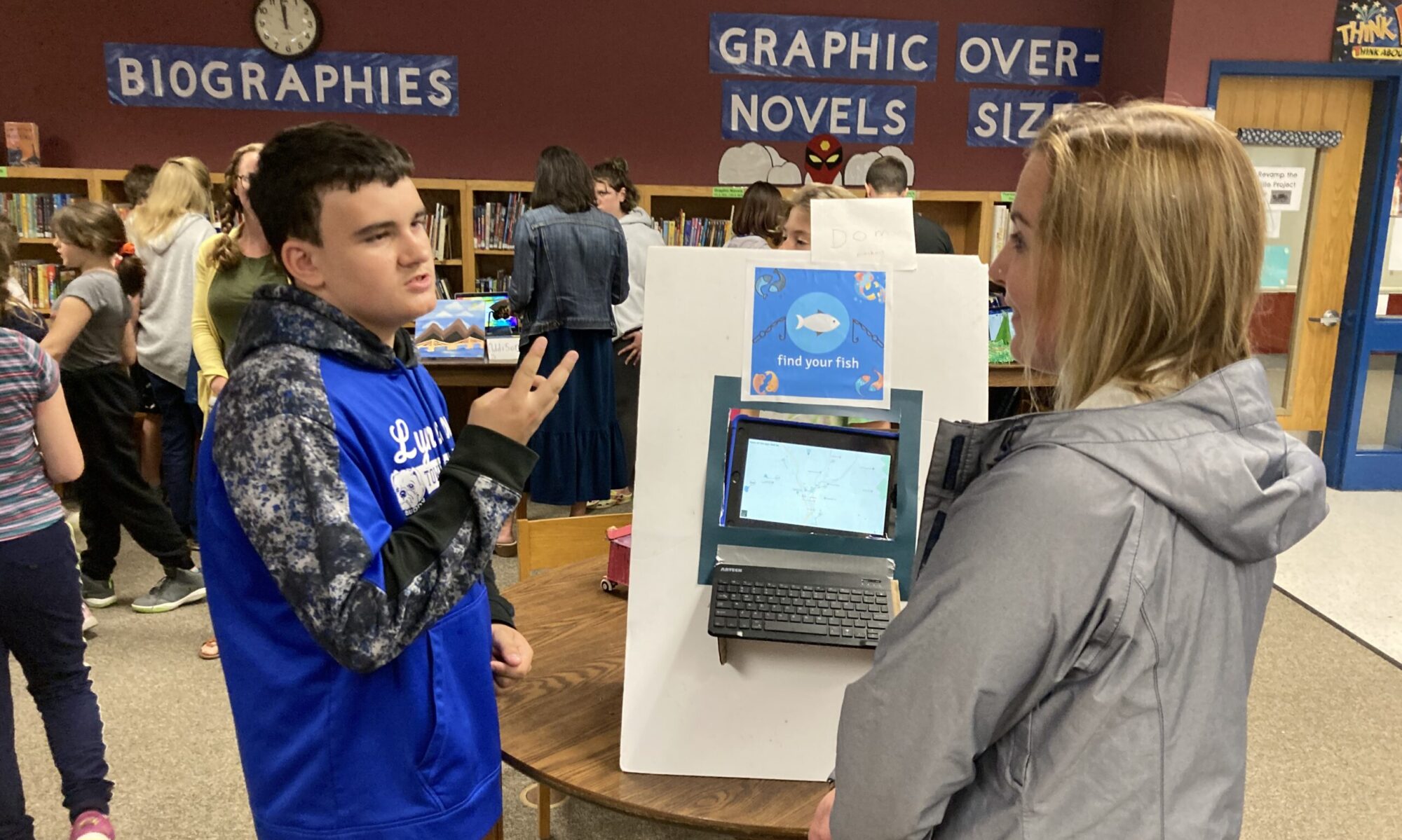It’s about time
 I am fascinated with master schedules! This is certainly a massive understatement. I love the challenge of putting all the pieces together, showing how everything is connected. My mind is wired to think through a systems lens. I am always asking myself, if I change this thing over here what happens over there?
I am fascinated with master schedules! This is certainly a massive understatement. I love the challenge of putting all the pieces together, showing how everything is connected. My mind is wired to think through a systems lens. I am always asking myself, if I change this thing over here what happens over there?
However, I feel like the picture on the puzzle box, you know, the one that shows you how to put the puzzle together, isn’t the right image to be working off anymore. The way we build schedules is struggling to keep pace with the pedagogical beliefs and practices in schools.
Let’s look at some schools that have made some significant shifts
KQED recently published an article written by Katrina Schwartz that very articulately describes the shift to greater personalization and student centeredness: Why School’s Master Schedule is a Powerful Enabler of Change
Example 1: Henry County School
Henry County School hosts this video on their Personalized Learning section of their website. It has a tremendous list of resources to scaffold this type of learning.
https://www.youtube.com/watch?v=GD-QhNjQlFE&feature=youtu.be
Example 2: Soar @ Montpelier High School
The Montpelier High School Soar Program presents the follow description:
“Soar is an innovative approach to high school that empowers students to build their educational experiences around their interests. The mission of Soar is to create a space where students can be open minded and excited about their education. Students pursue their passions through deep independent studies and real-world experiences. It also teaches students how to maintain healthy ownership of their education, while drawing on the community for direction, inspiration, and support.”
and shared this brilliant Prezi:
Example 3: Nexus @ Champlain Valley Union High School
The Nexus Program at Champlain Valley Union High School shares:
“Personalized learning is the core mission of the Nexus program. Students choose topics of interest and develop a series of learning activities that will allow them the opportunity for deep inquiry, community connections, and skill development toward the CVU Graduation Standards.”
“Nexus@CVU is a program dedicated to student learning in a highly personalized environment which encourages self reflection, deep inquiry, and community connection.”
These programs represent a highly personalized learning opportunity. Hopefully they get get you thinking about what is possible.
If you embrace project-based learning, 40, 42, or 47-minute chunks of time just don’t support students or this practice. So the million dollar question is… so then what?
Why talk about school schedules?
First, I believe that the work on schedules is difficult and people put a lot of time and energy into the process.
Second, I believe the work has people’s best intentions. So please don’t any offense, non intended.
Third, I often feel the process starts out with ambitious visions and then gets eroded by the long list of things we don’t think we can change.
Fourth, this post is not intended to offer a final solution. I am trying to frame some questions, challenge some practices, and help keep an eye on what is best for students. Finally, one of my favorite Albert Einstein quotes:
“We can’t solve problems by using the same kind of thinking we used when we created them.”
When to start talking about schedules
One other important point to mention, as referenced by the title, the timing of this post is intentional because these schedule conversations may have budget implications for the next school year. If this is the case, starting the schedule process in the spring just doesn’t work.
Who’s thinking about school schedules?
My thinking about this topic has been heavily influenced by Diana Laufenberg. I had opportunity to attend one of her workshops last spring and was impressed. She was able to articulate many of the things there were in my head.
Her blog post “Thoughts on School Schedules” offers some great framing:
- Schedules serve the mission and vision of the school. Just like technology serves the learning, so does the schedule. If you are looking at your schedule and wondering why it is the way it is, most likely it is not a manifestation of the mission and vision of the school. Be intentional about your choices and make the schedule serve the learning.
- Be transparent about priorities. The school schedule can serve the priorities of the school very intentionally. You want small class sizes more than anything else, then you maximize the amount of teacher/student contact minutes. You want common planning, you bend the options in the schedule to prioritize it. You want it all… don’t we all… but your schedule probably can’t deliver it ‘all’. That is why priorities are so important. Know what your schedule says about what you are prioritizing.
- Invite all ideas. Many people in the school community are at a loss to explain how the schedule happens, how decisions are made or why they happen in the way they do. Have a frank discussion with members of the school community in order to make transparent the process and invite comment. You never know where a clever and unexpected idea might come from.
- Be willing to think creatively. I was helping my cousin restructure the schedule for her small charter program. At the peak of frustration, I suggested they let go everything they knew about the ‘hours’ and think about what they wanted to schedule to deliver each week – in terms of total minutes – and then go back to the board. This was the ticket to cracking into a more creative way to solve their scheduling issues. Stop thinking assembly line, start thinking holistic experience. How is the process you are using, dictating the ability of creativity to permeate the scheduling protocols?
How can school schedule change work in Vermont?
Specifically in Vermont, but in many other states as well, the traditional roles of teachers, place of learning, and timeframe are all being challenged to some degree. Students are taking an active leadership role in choosing their path, and the challenge for schools is how do we honor these paths? If we encourage students to be active in their community, work with mentors, and focus more on the creation of knowledge tradition roles, locations, and times just don’t have a strong pedagogical alignment.
Just a quick illustration:
What if a student chooses to enroll in an online class and demonstrates proficiency in said class. What does this look like back in school? What do we offer this student in place of their “regular” class?
Solutions?
I’m still grasping but my wondering keeps circling back to dissolving the discipline boundaries. The Edge Academy has a powerful statement/solution:
“Real world, relevant projects that have no subject boundaries”
Simple and brilliant. I’m intrigued! However schools or teams engage/facilitate/scaffold learning, I am seeing a need for longer amounts of time. If we keep trying to fit X number of individual subjects into a day that drives us into our current dilemma of time.
Final thoughts & questions:
- This is a journey and we may not get there in one year.
- One of my favorite bumper stickers – Question Everything
- What external structures need to be explored to allow for flexibility? Many contracts as written do not allow for flexibility.
- What relationships within the community can help expand the possibilities?
- We should involve students and parents in the process!
- Let’s paint a new picture on the cover of the puzzle box.
I recognize I have raised some questions both philosophical and structurally without proposing solutions. Fairly irritating, I agree. However, the more we can have ask the right questions to the right people the closed we will get to have a strong alignment between pedagogy and practice.

